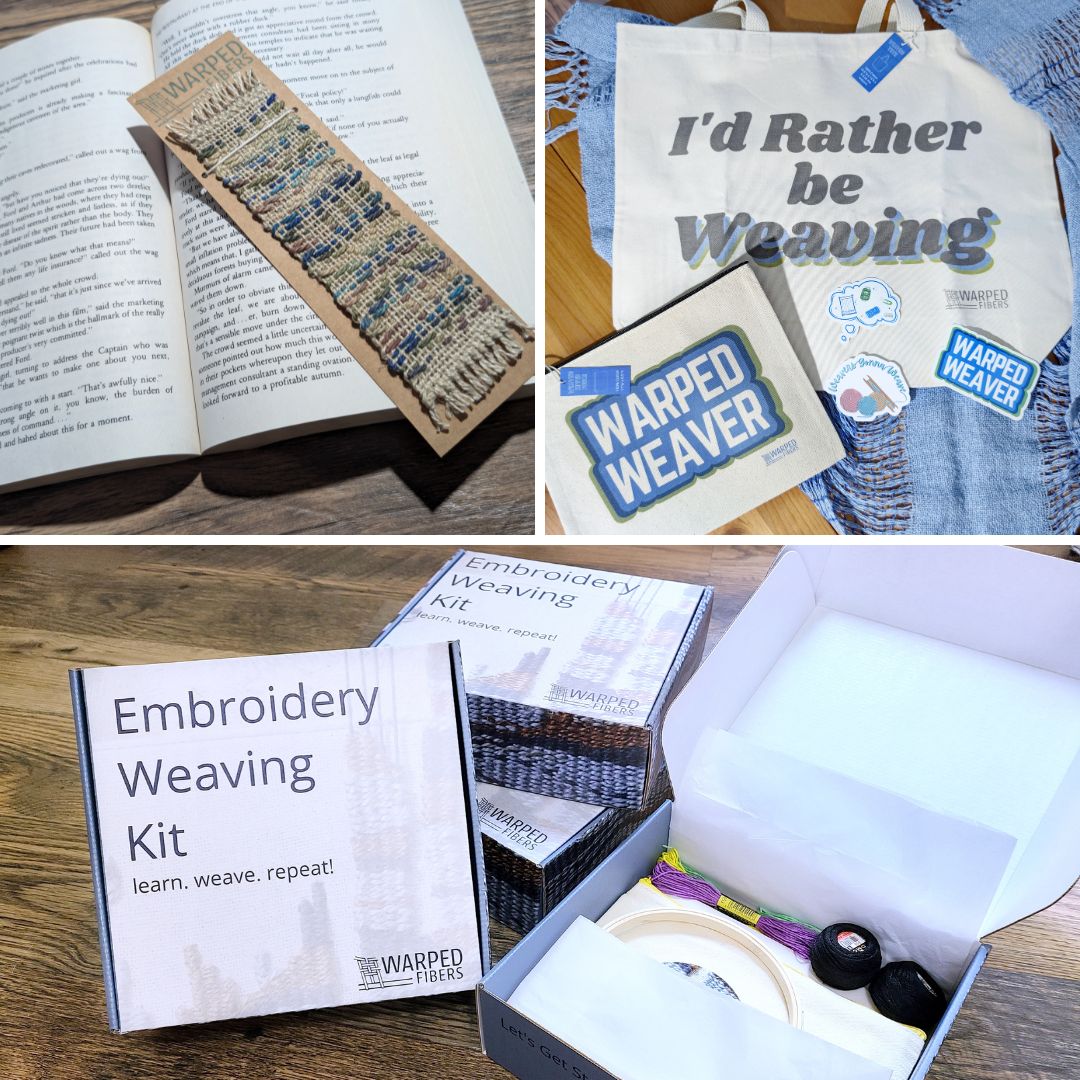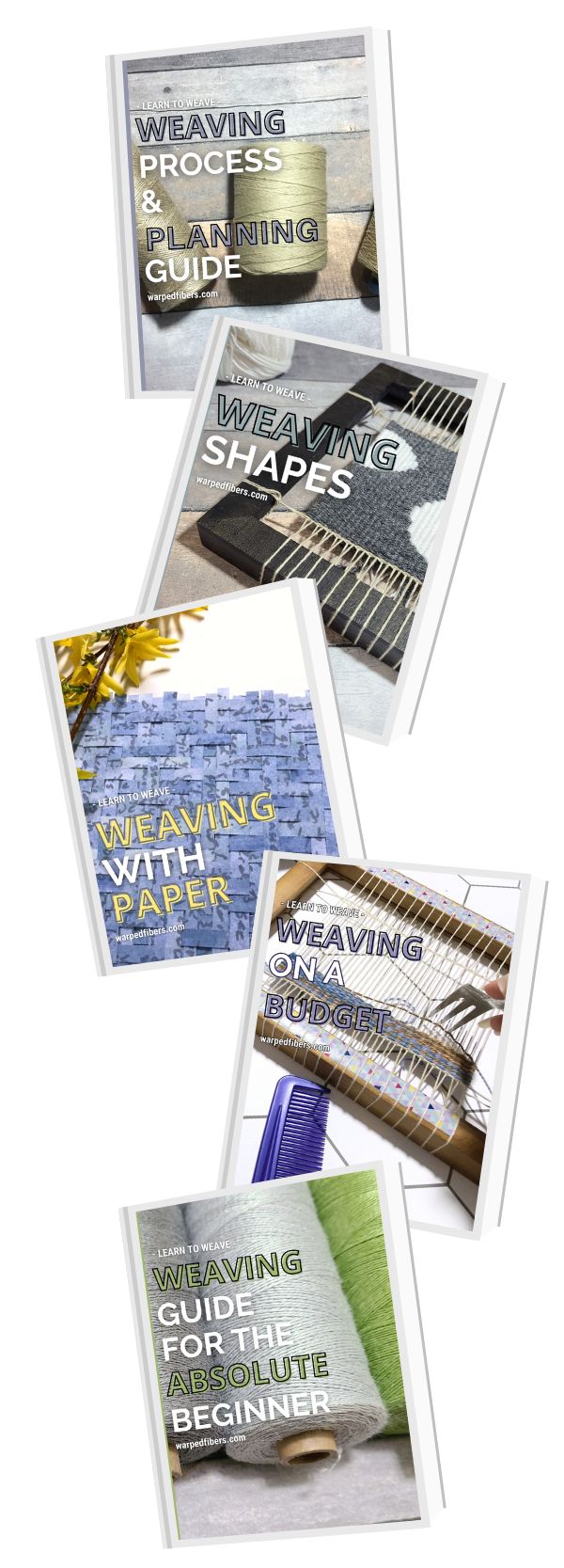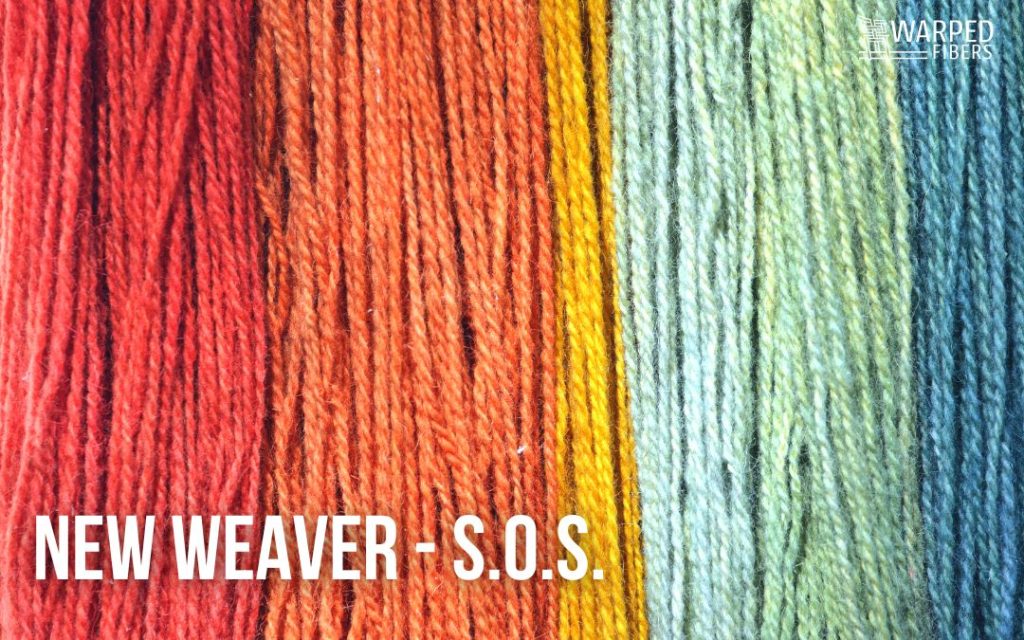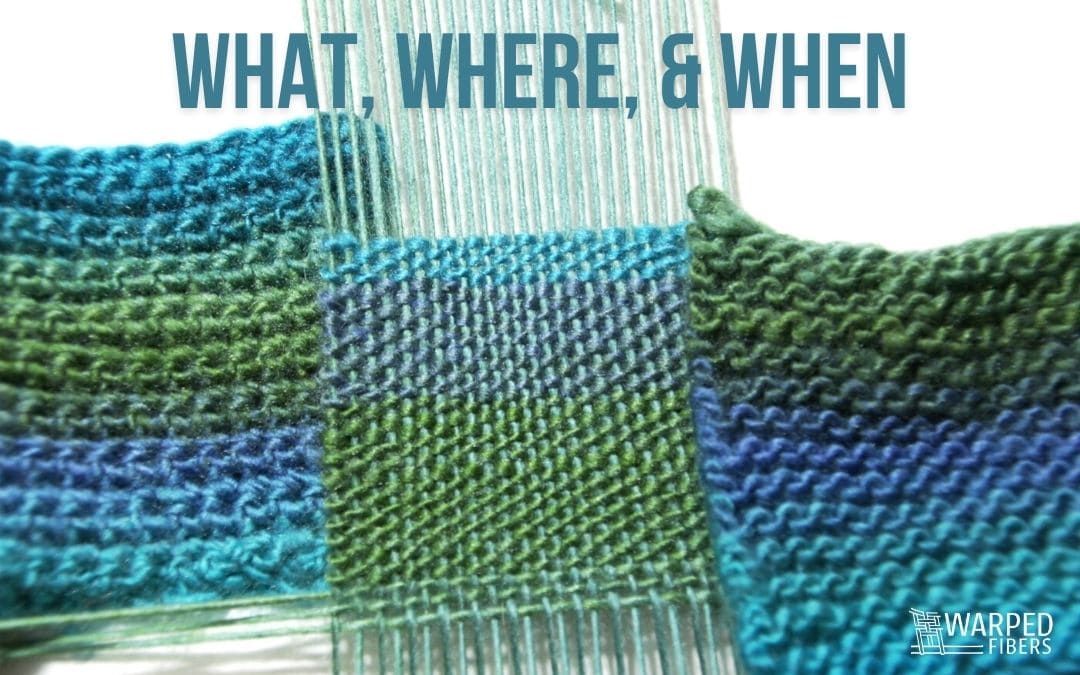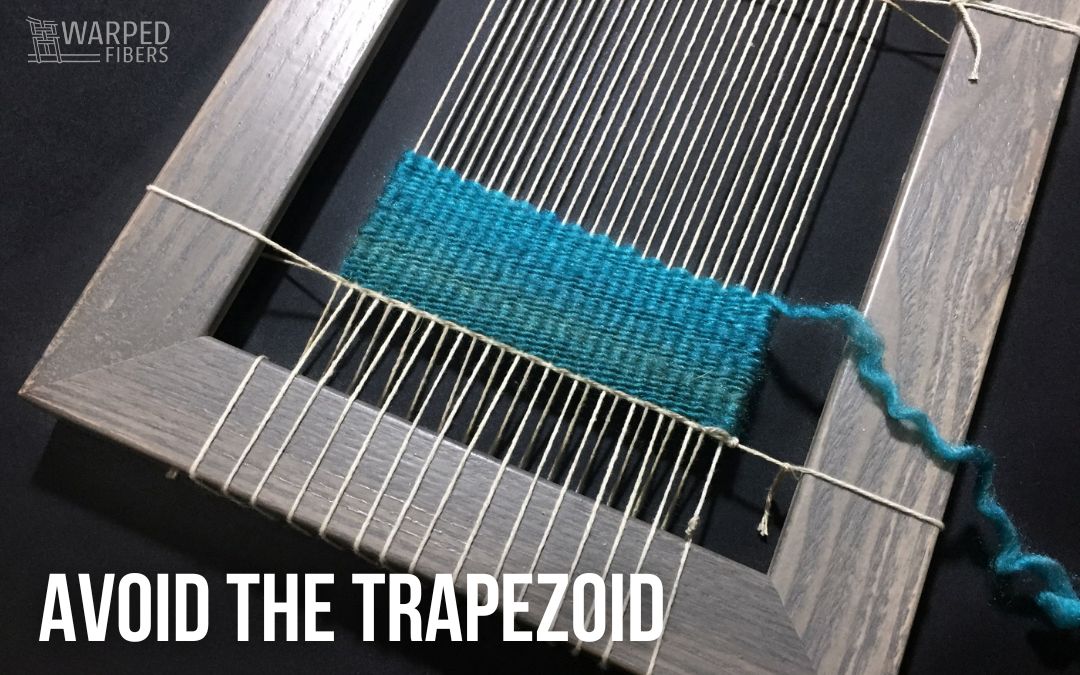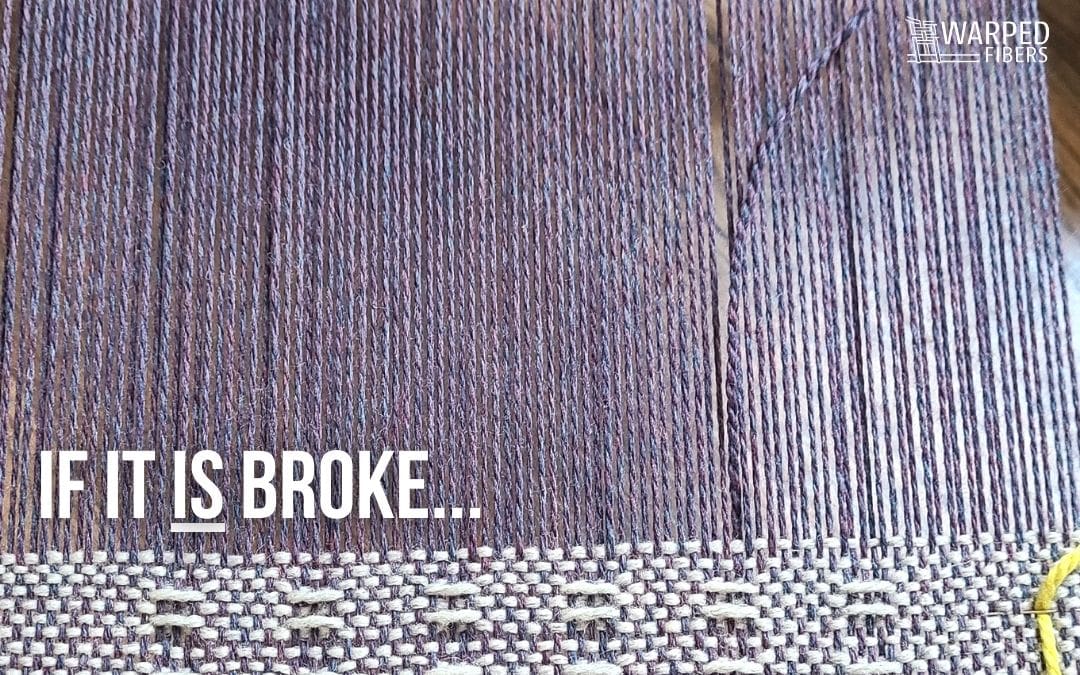There are so many different weave structures.
Like A LOT.
So I am not going to go over EVERY weave structure, but I am going to go over the basic three that every weaver should know!
These structures can actually play a big part in creating the basis for other weave structures that you will come across.
The basic three weave structures are plain weave, twill, and satin.
First, though, what do I mean by weaving structure?
The weaving structure is determined by how the warp and weft interact with each other. These different structures determine a lot of different aspects of the fabric including: how well it drapes, it’s strength, and the way it reflects light.
Beyond these main three patterns are many others that are built off of them. Think overshot, double weave, woven pile, manipulated laces and more.
Jump To:
The 3 basic weave structures
While most often, you would characterize twill and satin weave as types of pattern weave structures – technically speaking plain weave is also a pattern!
Just a really simple one.
Not only are these three structures the basis for most weaving structures, but they are also the ones you are most likely to come across in the wild.
And of course by “in the wild” I mean the fabric making up your clothes and other common fabrics…
Obviously.
There are now 2 ways to take it – either purchase the whole course at once for a discount or “create your own” course by purchasing just the parts you want! Either way, get 10% off for being a member of the Warped Community!
The weave structure fraction
The first thing we need to talk about though is the structure fraction.
In order to understand how a fabric is woven it is often preceded by a fraction.
2/2 twill, 1/3 twill, and 7/1 satin are all examples of this.
The top number of your fraction denotes how many warps your weft is floating over and the bottom number is how many it goes under.
Plain weave
This is the structure that most people think of when they think about weaving. It is also probably the first type of weaving that you ever did – as a kid with paper or while making potholders.
You know what I’m talking about.
Plain weave, which is also called tabby, is simply weaving your weft over one warp and under one warp. The next line of weaving will then be the opposite in order to interlace your threads and create your fabric.
That is the whole pattern.
Due to the simplicity of this pattern, the structure is the same on the front and back of the weaving. As long as it is not an image-based weaving it will look the same regardless of the side you are viewing.
The EPI that you choose for your weaving will help to determine if the plain weave is balanced or tapestry. Balanced weave is a plain weave pattern with a higher EPI so that you see equal amounts warp and weft (aka a balanced amount.)
Tapestry, on the other hand, is a little bit different.
While there is more to tapestry than the fact that it is plain weave – it is a big part. (make sure to click the link to read more about what makes tapestry tapestry as well as it’s history.)
The short answer is that tapestry is a weft-faced plain weave fabric that has discontinuous weft. You may be used to seeing tapestry as image-based wall hangings like The Unicorn Tapestries.
So how does plain weave behave?
Plain weave will be the most stable of the 3 structures because the warp and weft have the most contact with each other out of all of the weaving structures.
Plain weave is almost never preceded by a fraction, but if it was then it would be 1/1. Something to keep in mind: depending on the EPI, the gauge of your yarn, and the fiber content – plain weave has the potential to be the stiffest woven fabric. Especially if it is tapestry.
Twill weave
Twill is a weaving structure characterized by going over multiple warps and under multiple warps then shifting that pattern in the next shed. This creates a diagonal line across the surface of your weaving.
Depending on the size of the weft that you use it could actually create a tactile ridge on the surface or be almost purely visual.
The most common twill pattern is a 2/2 twill that can be pictured in the diagram above.
This means that your weft will go over 2 warps and under 2 warps all the way across your weaving. In the next line (pick) the pattern shifts over 1 warp and this continues with every line. The shift is what creates your diagonal pattern.
Twill is probably the second most common weave structure and one that I can ALMOST guarantee you see everyday and don’t even know it.
Denim.
Yep, denim is a twill weave structure!
Go ahead, take a look at your jeans and examine their structure.
Or just look at the pictures below.
Sometimes with denim, it is actually easier to see the pattern if you look at the underside. This is because denim is actually a warp-faced twill where the warp is normally dyed indigo and the weft is white. Of course, denim is not the only twill fabric, but it is definitely the most common.
Since twill contains floats (when a weft goes over more than one warp) it allows you to compress the weft more than you would on a plain weave fabric. With this denser weave, you get a durable fabric and with the floats you get a fabric that drapes better. This is what makes twill such a great choice for denim and other fabrics that need to be durable and easy to wear.
Using the twill pattern you can make many different variations.
Reverse twill, chevron, and herringbone are just 3.
You can create these patterns by changing the number of warps you float over and go under, changing directions, or skipping a line in the pattern.
What about tweed?
Tweed is often confused with twill because they have similar sounding names. Unlike twill, tweed is a fabric made in any weave structure with a rough wool yarn whereas twill could be made with any fiber. So you could have a twill tweed, but you could also have a plain weave tweed.
Satin weave
Satin is a weaving structure that is characterized by long warp floats that go under only 1 weft before continuing their pattern. That means that the structure fraction for satin will always have a 1 as the bottom number.
One of the most notable characteristics of satin is the sheen that it has!
The long warp floats let the light reflect off of the fabric creating a shiny surface. This does depend some on the type of fiber that is used to create the pattern, though. A wool satin weave just will not have quite the same luster as a silk satin weave.
This weave structure also drapes very well because there are less connections between the warp and weft. Unfortunately, this also means that it is prone to snagging. Therefore it is not a good choice for something you need to be durable.
Just like tweed is often confused for twill, silk and satin can be mixed up quite easily.
Silk is a fiber made from the cocoons of silk worms and satin is a weave structure.
You can have a silk satin which would be silk woven in a satin pattern, but you can also have polyester, nylon, and wool satins. This comes with the exception that cotton is almost always woven as a sateen and not a satin.
Sateen?!?
Yep! Another similar word to confuse you, but really it is pretty simple.
Beyond the cotton fiber content of sateen, you can also distinguish the 2 by the fact satin is warp-faced and sateen is weft-faced. Both of these will have long floats with a simple 1 point connection.
Once you know about these 3 basic weave structures you will be better equipped to understand more complex patterns and structures.
Knowing what each structure is made for will help you better choose the one that you may need at any given weaving moment.
References
⇣ Love It? Share It! ⇣
You May Also Like

















